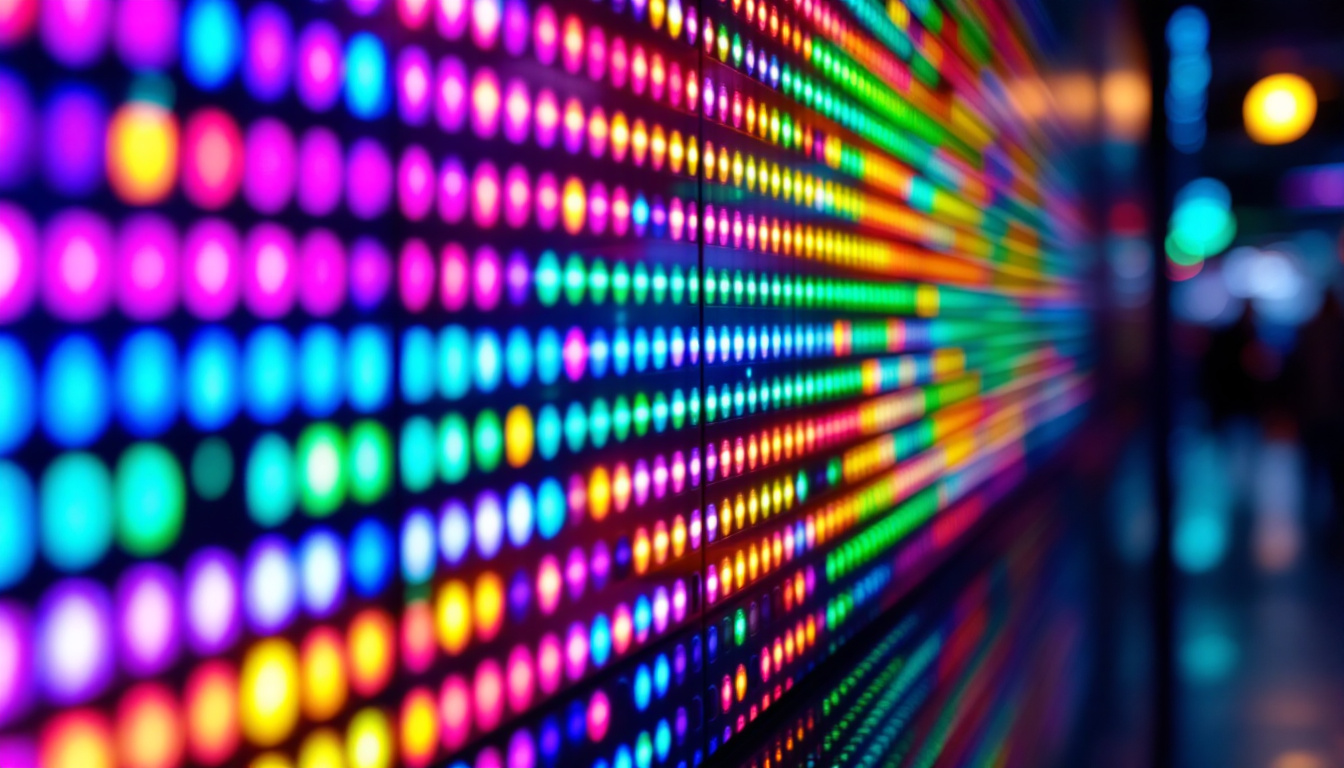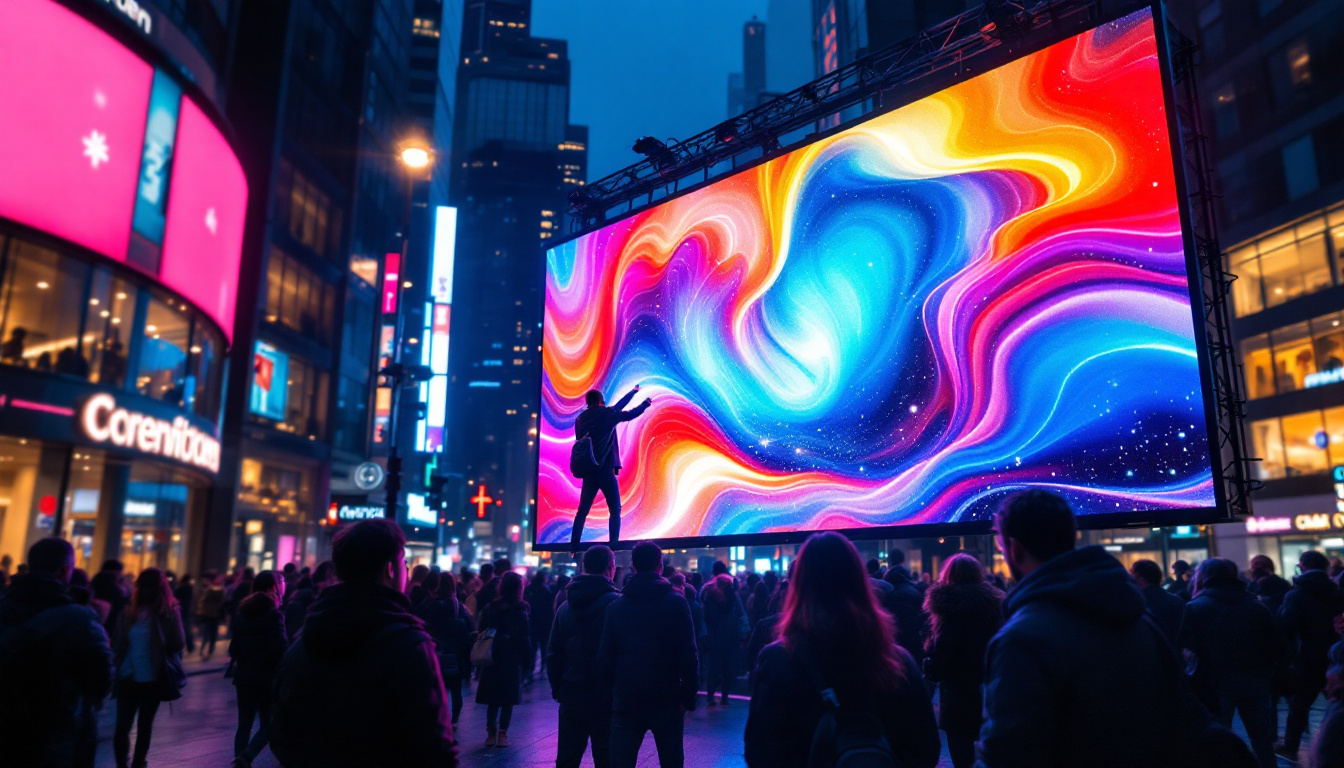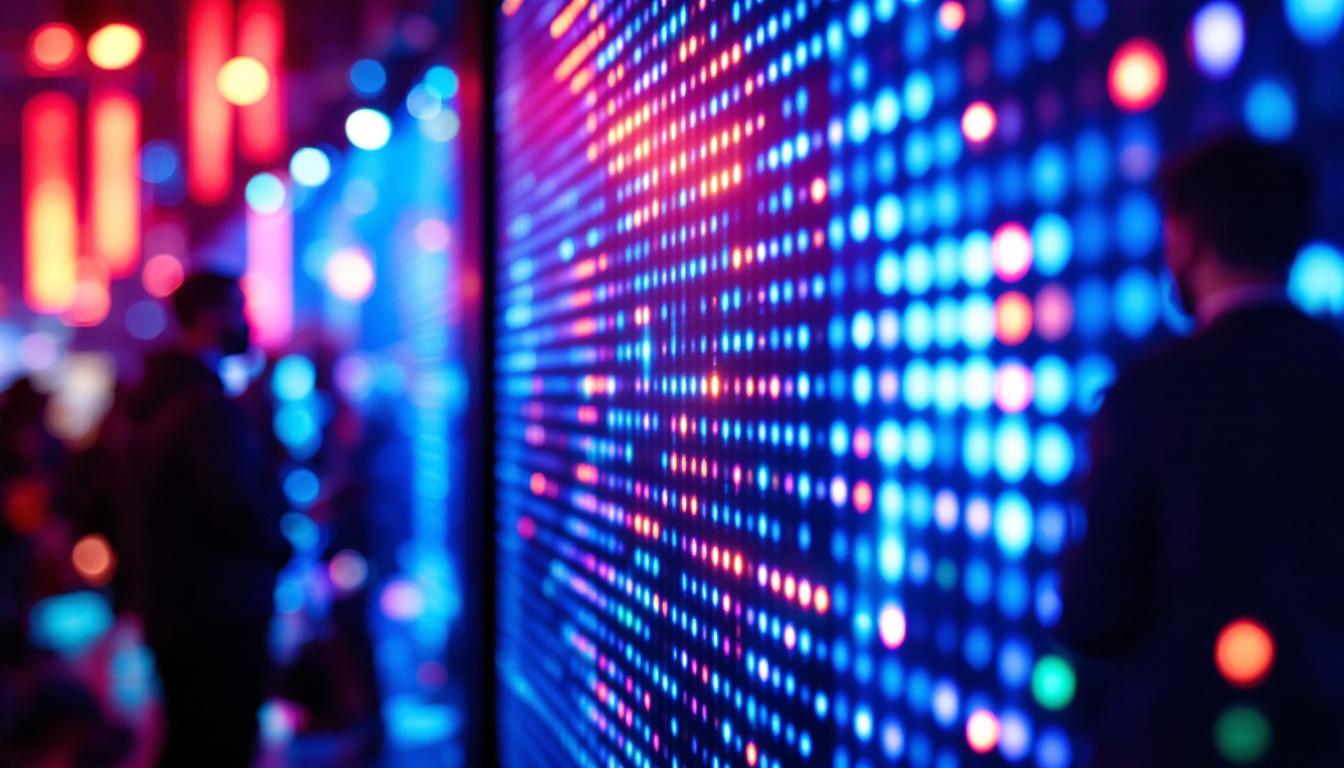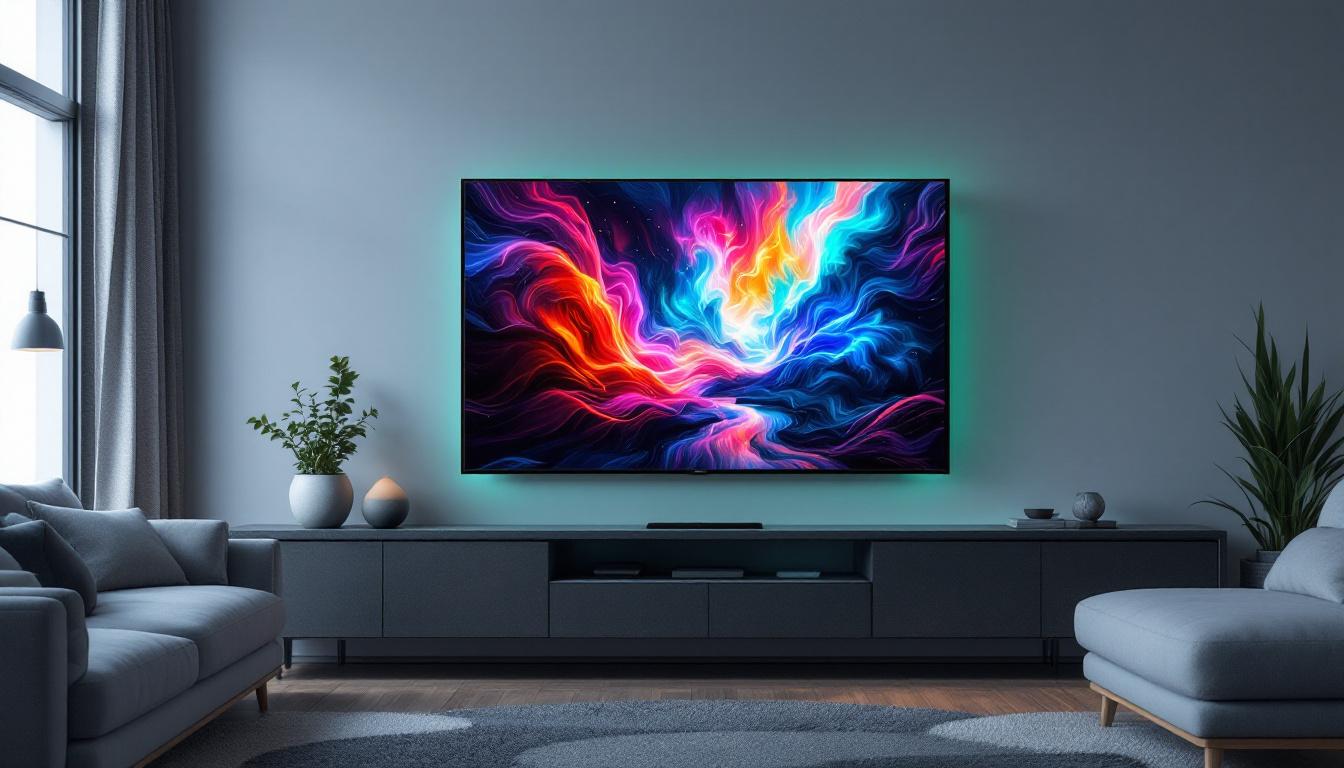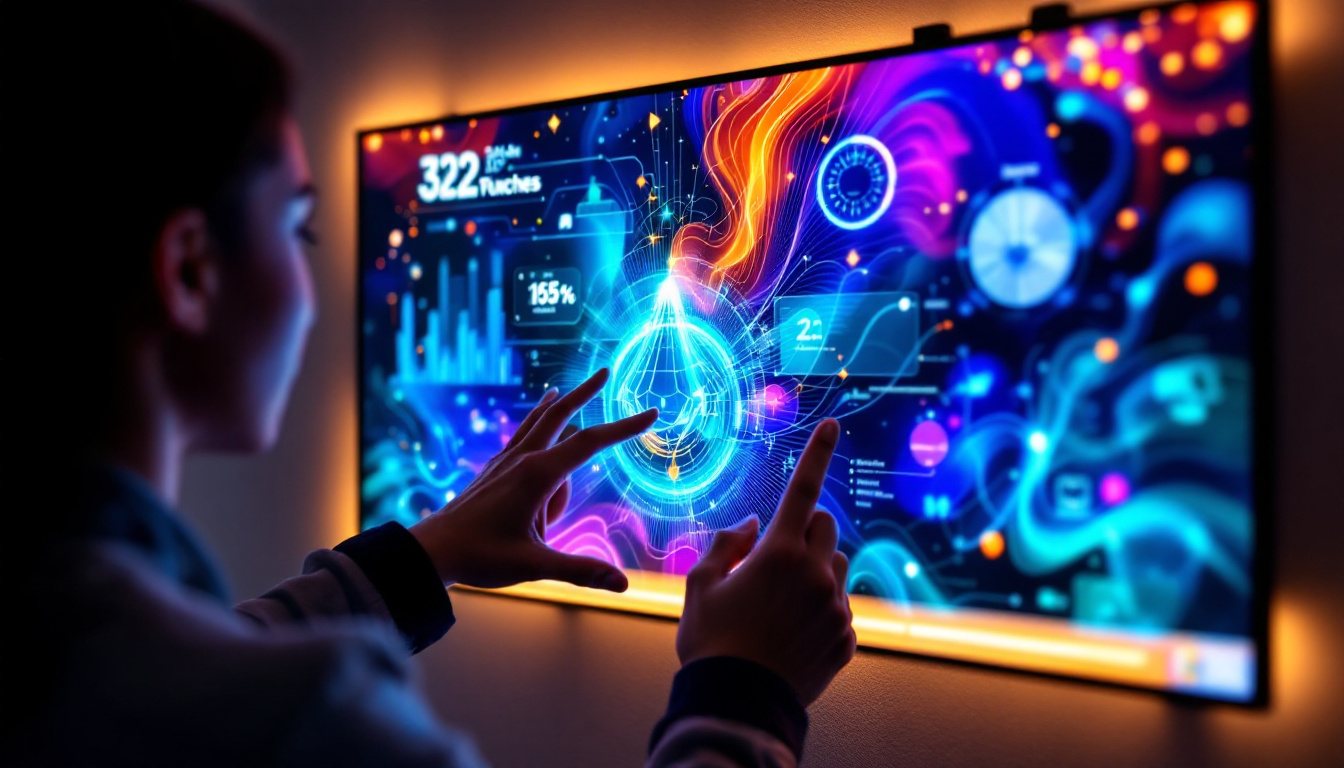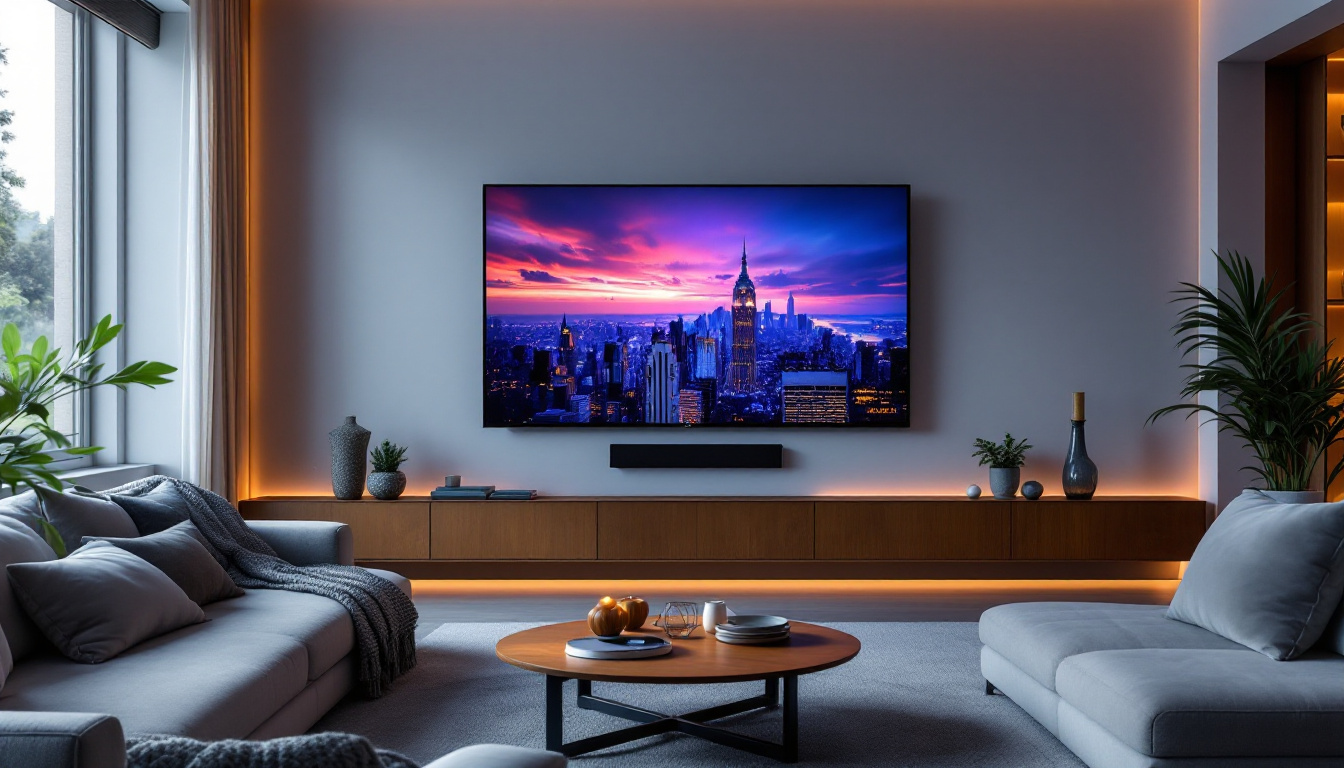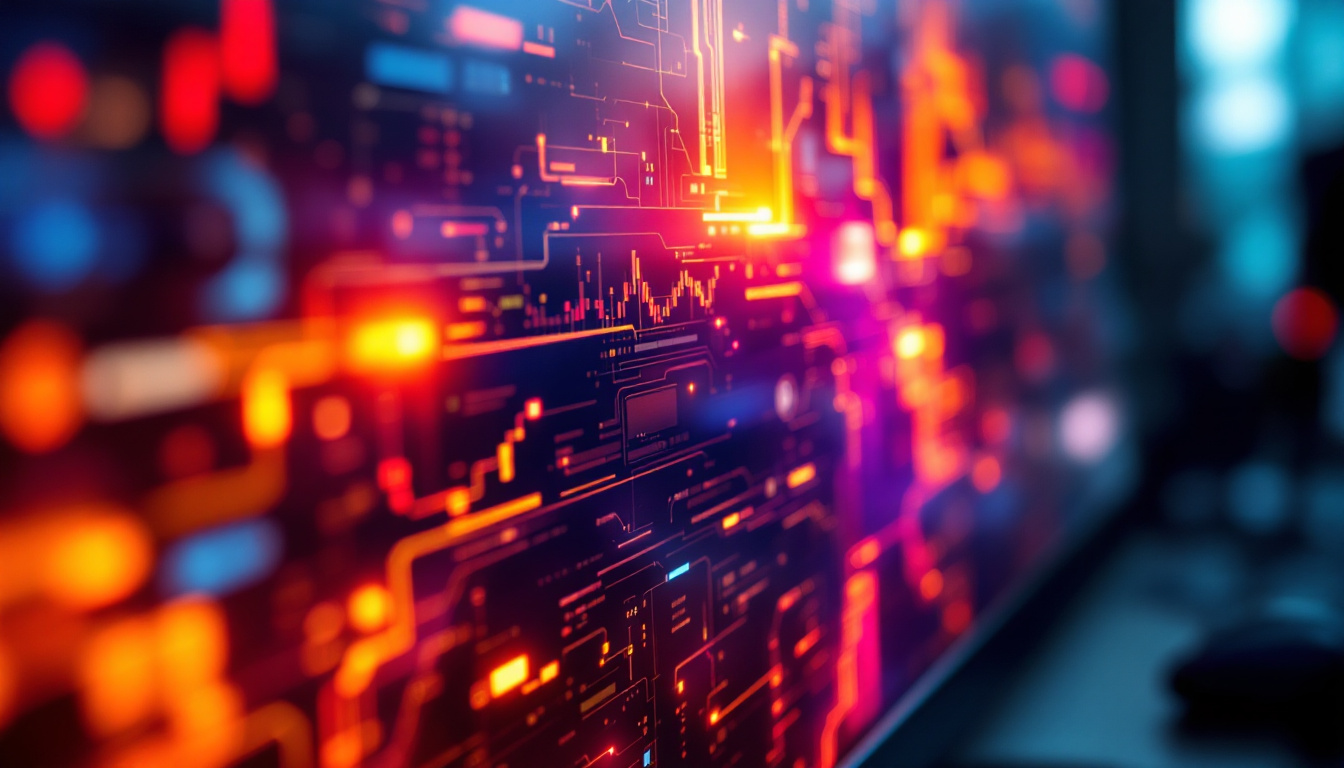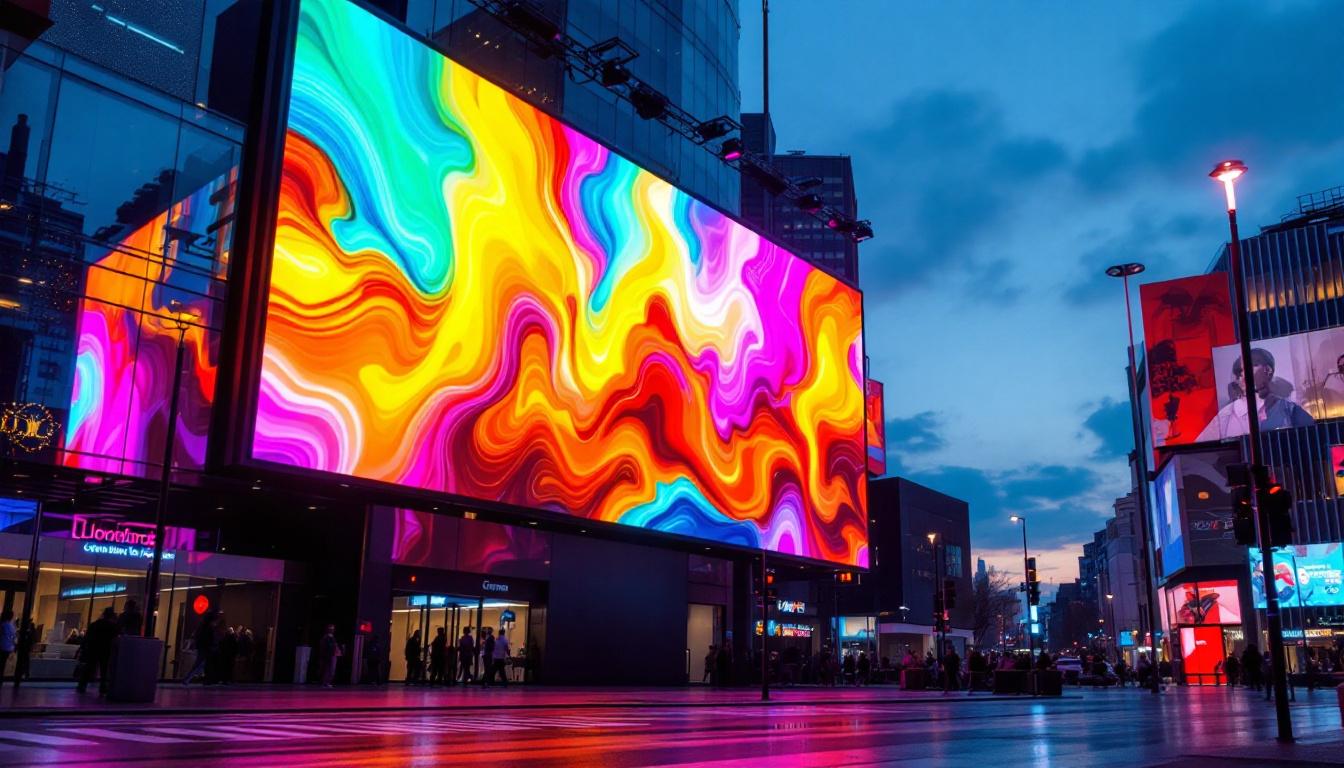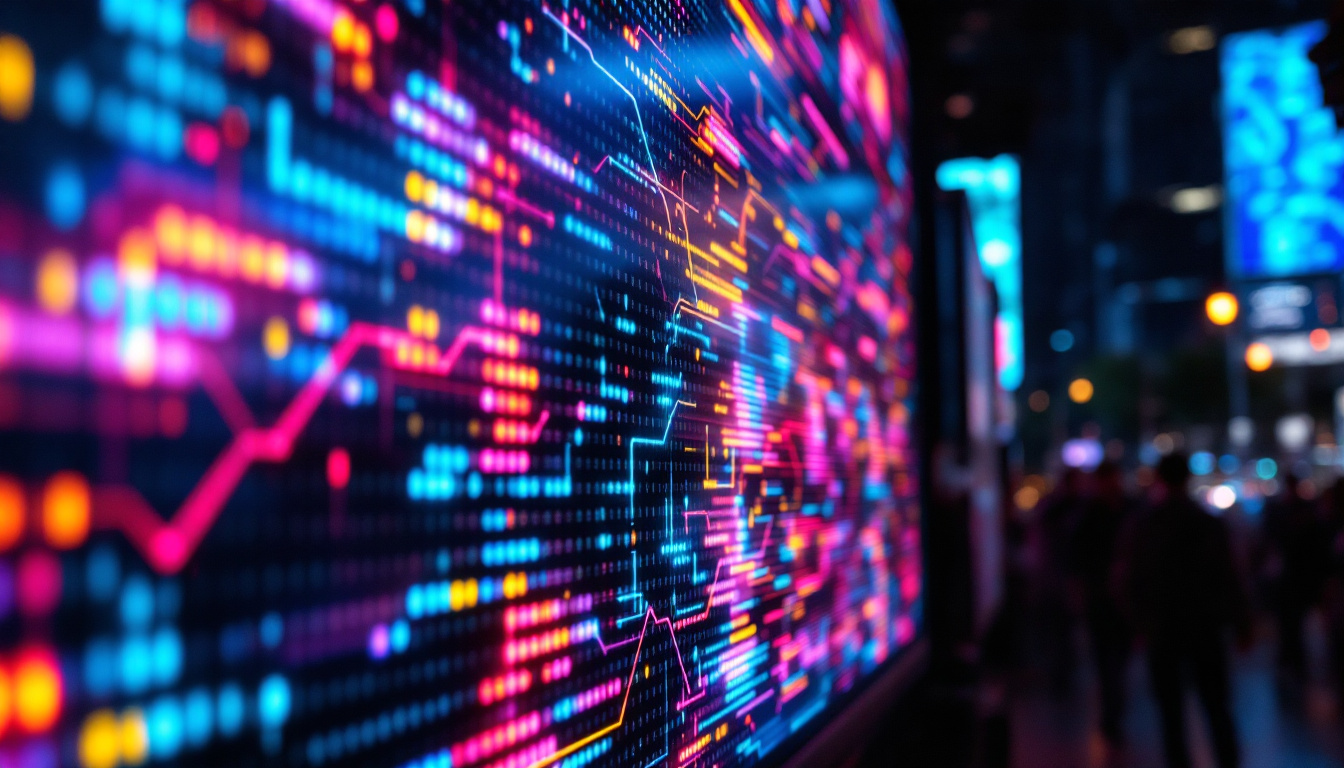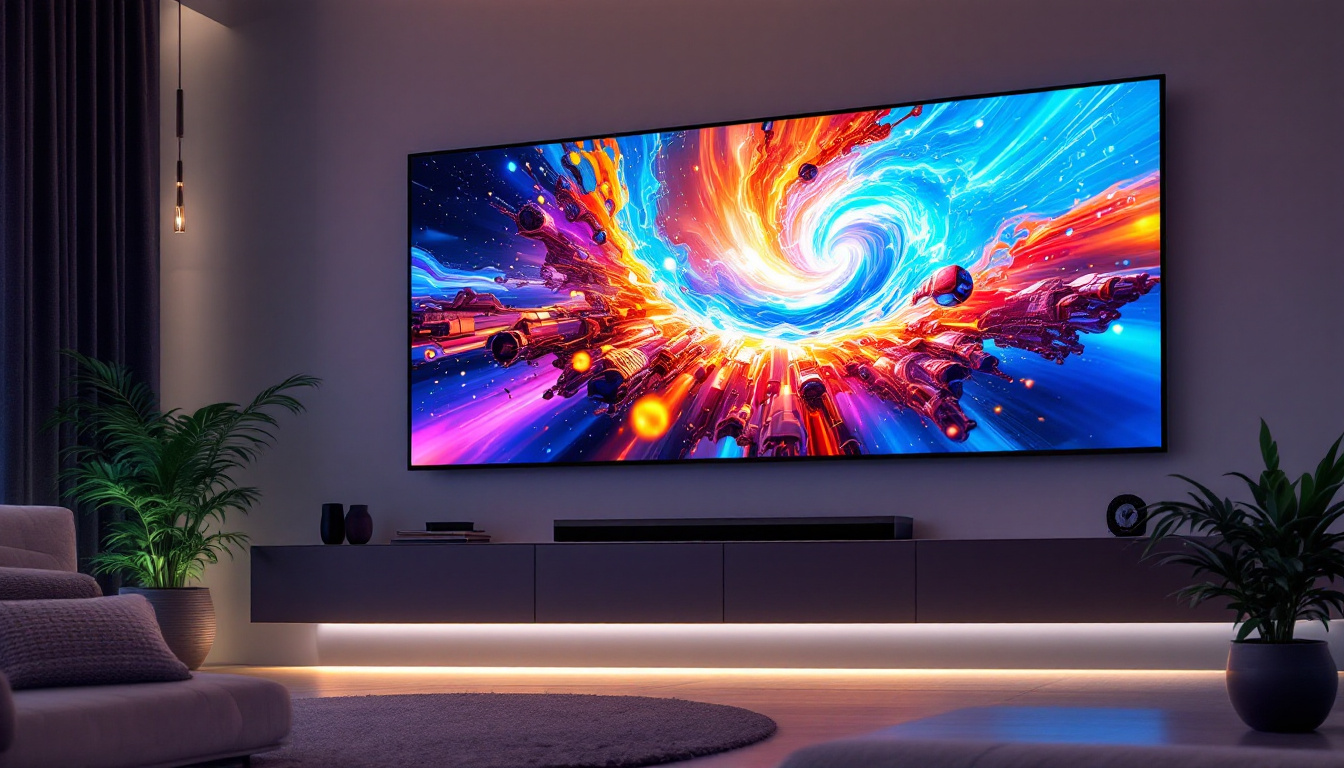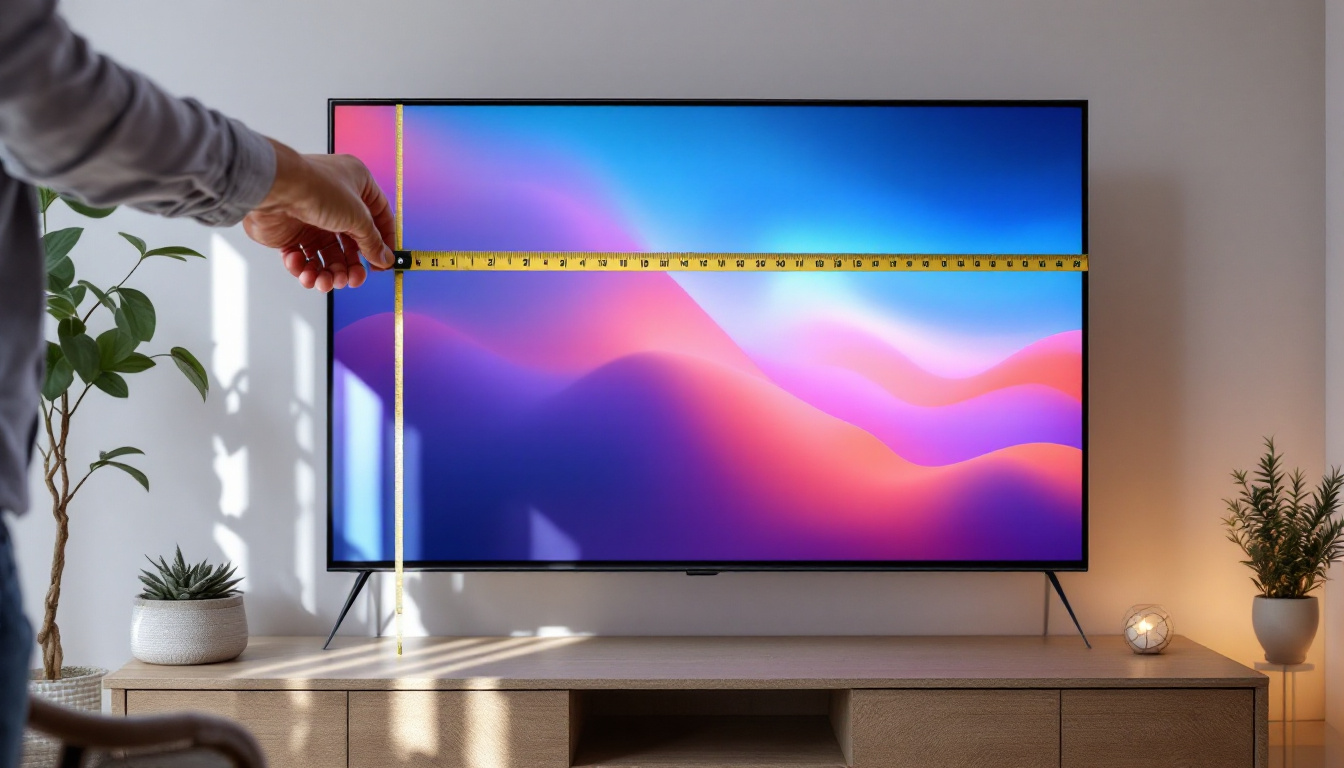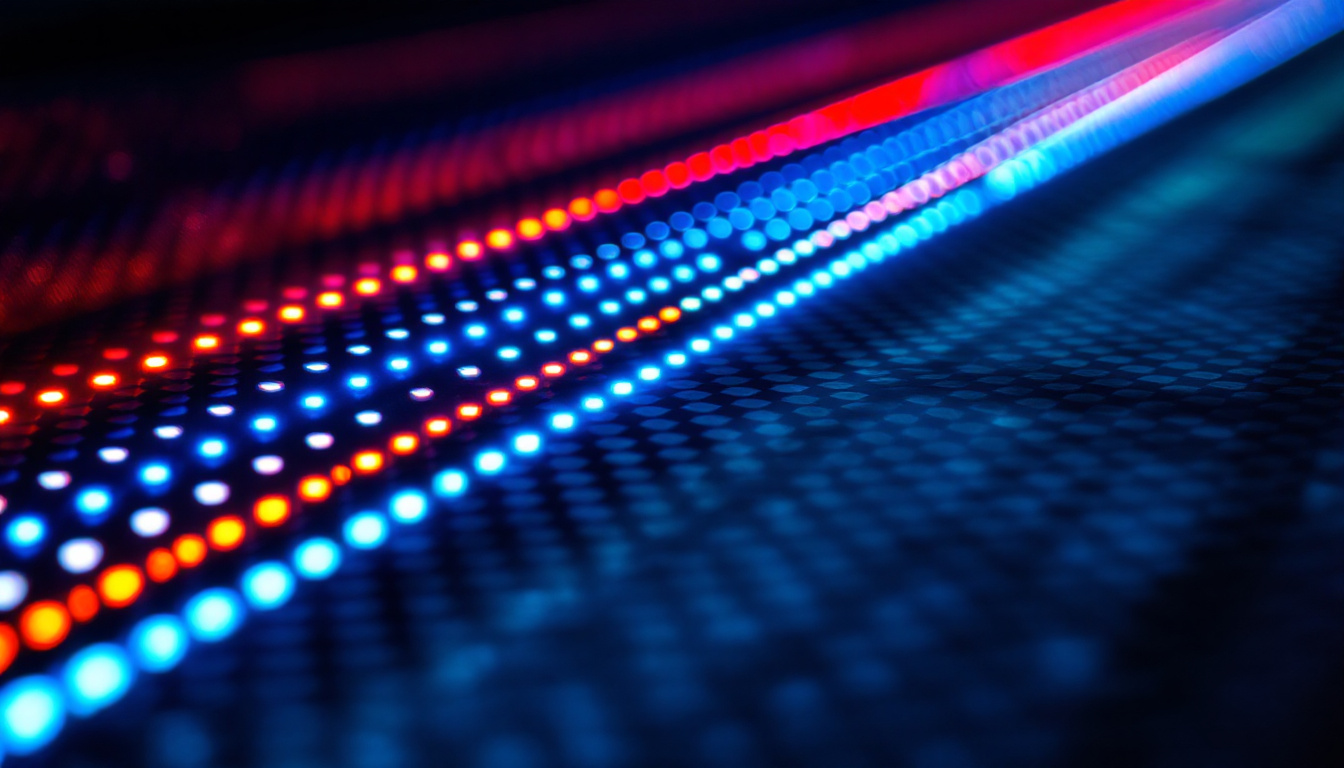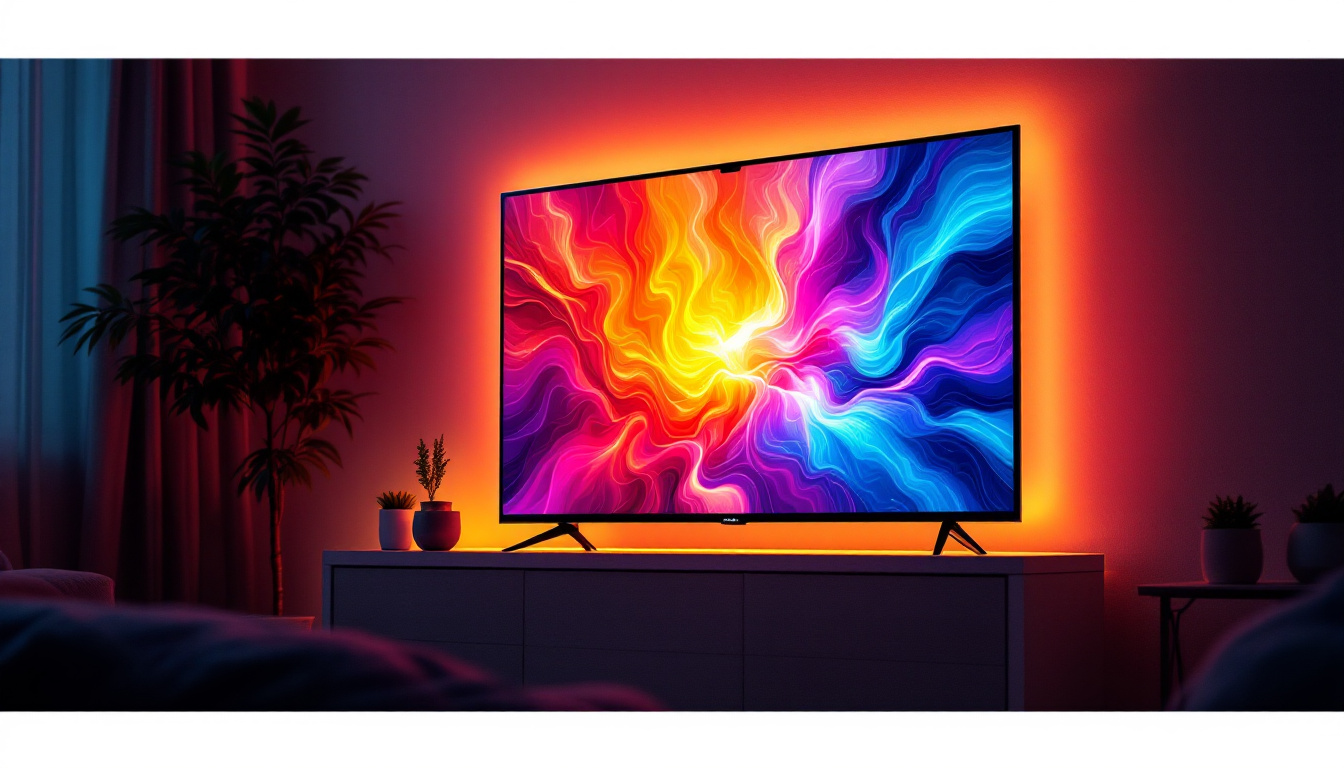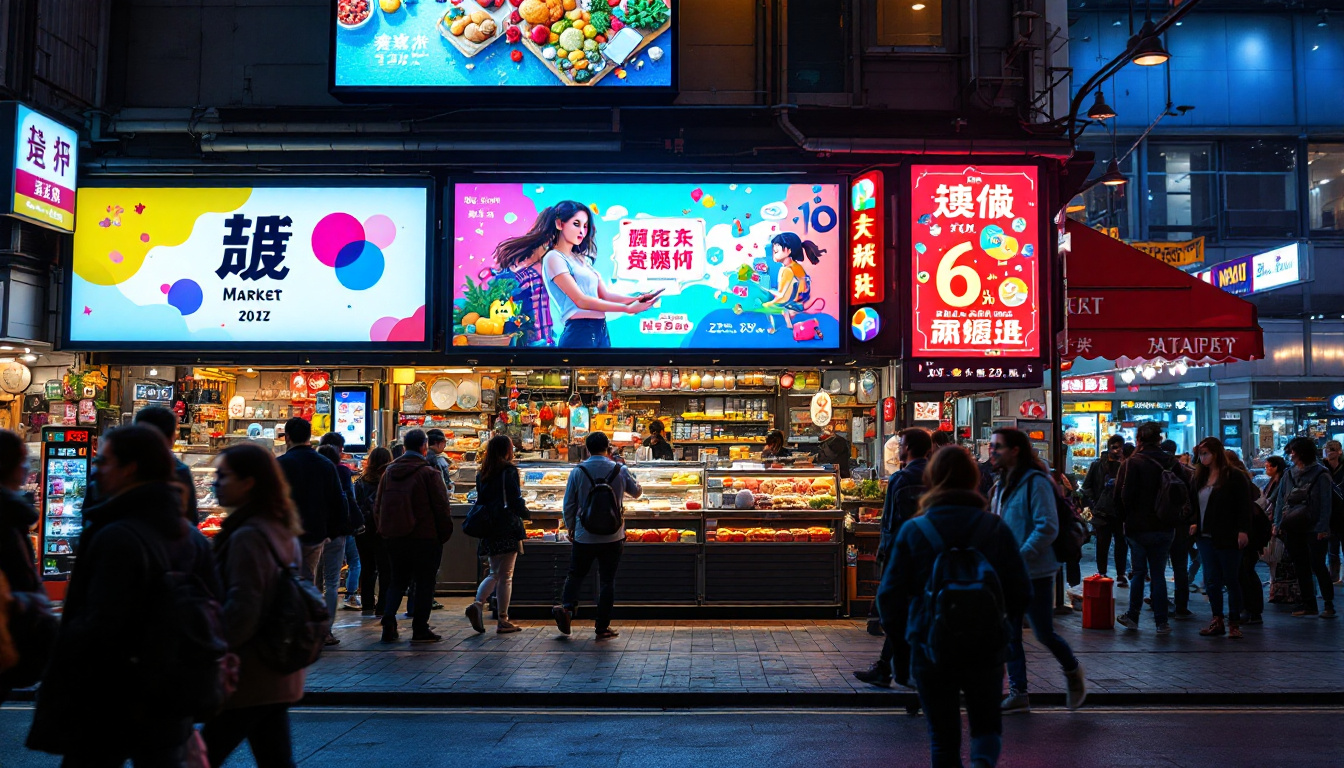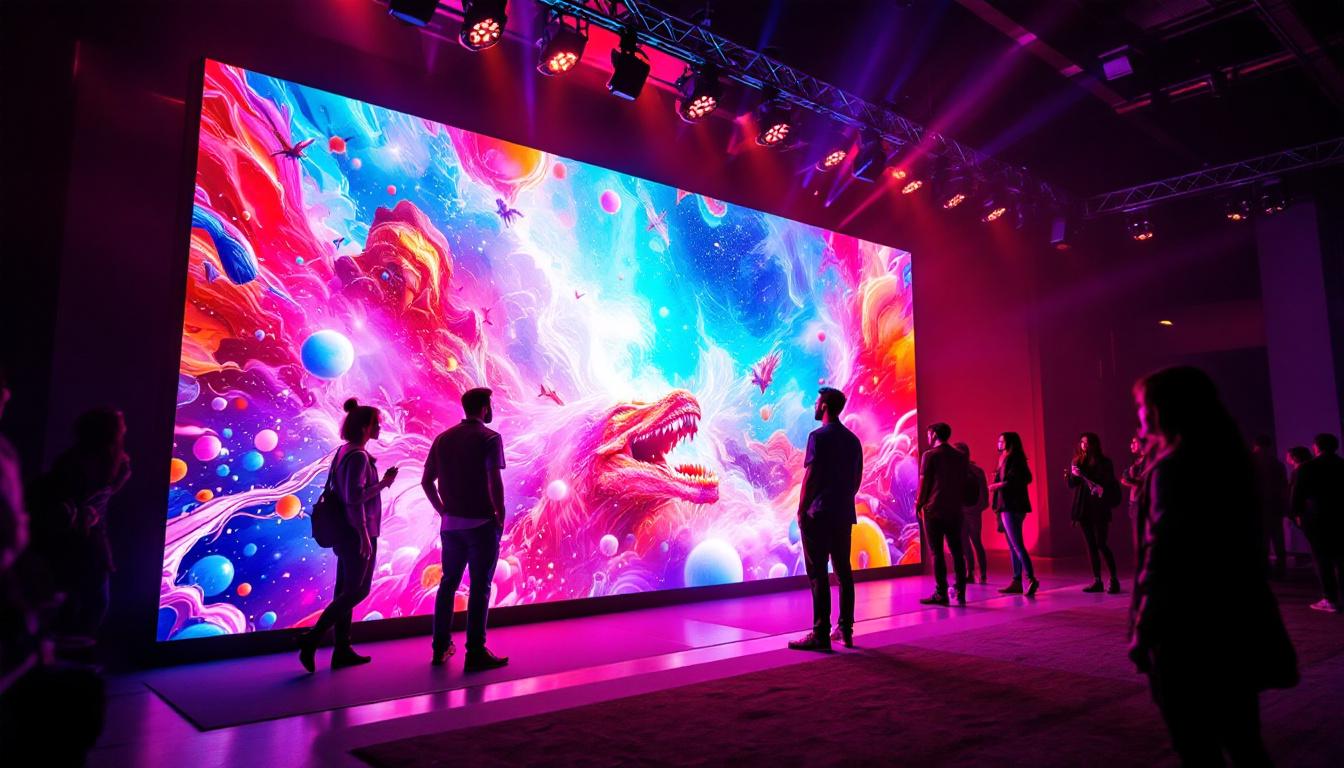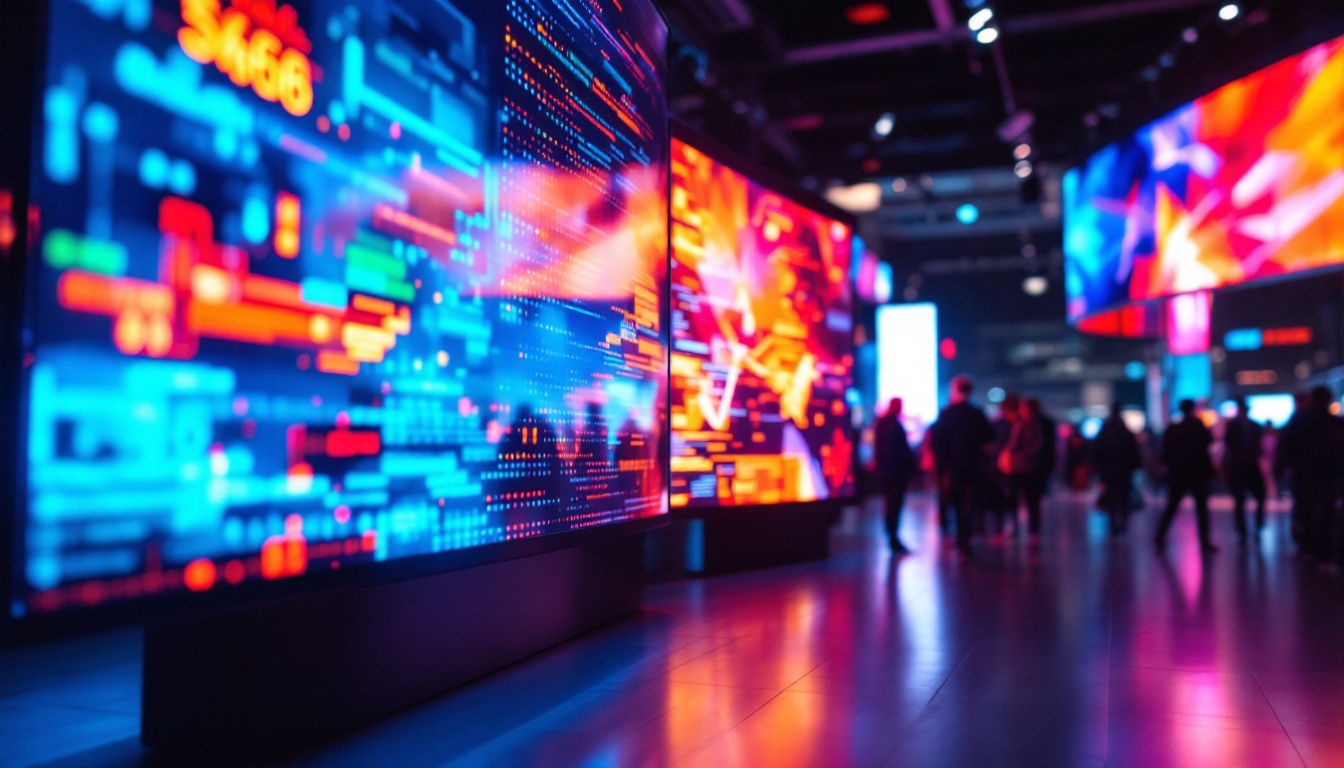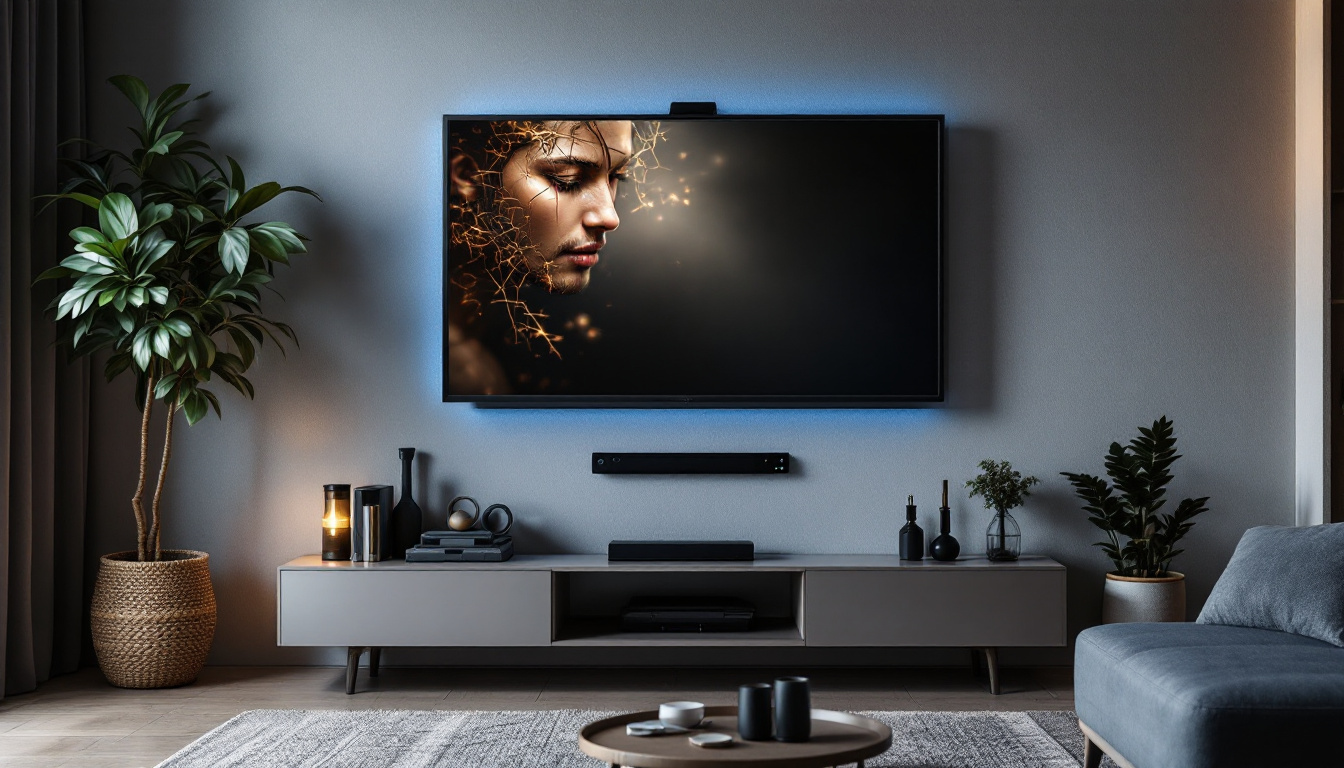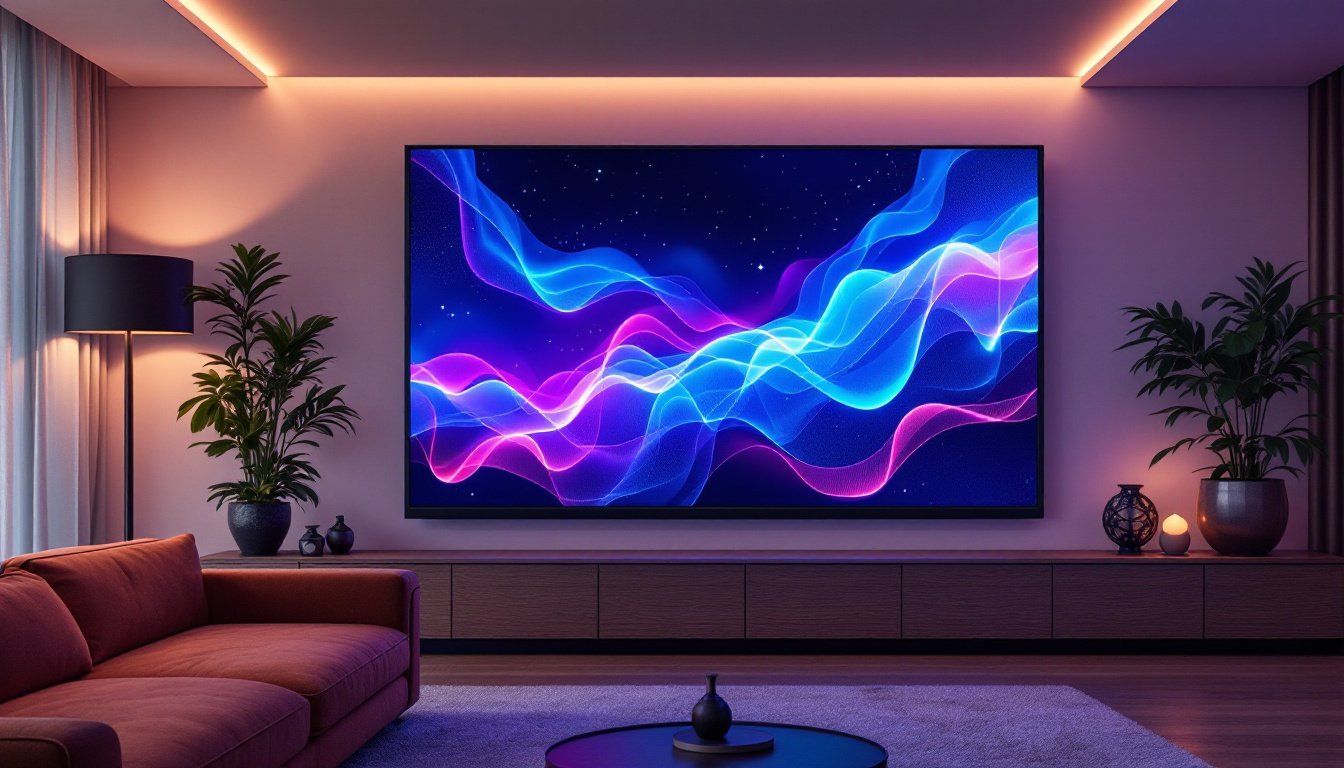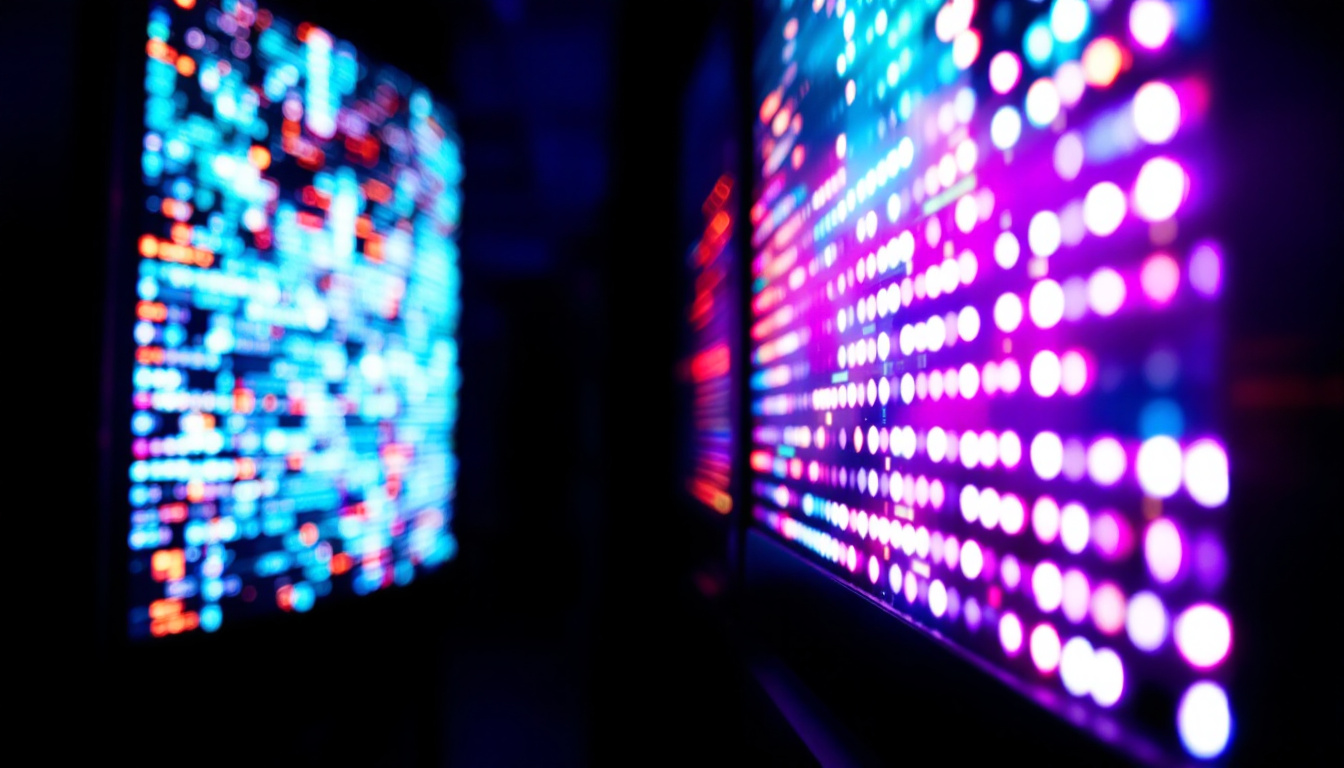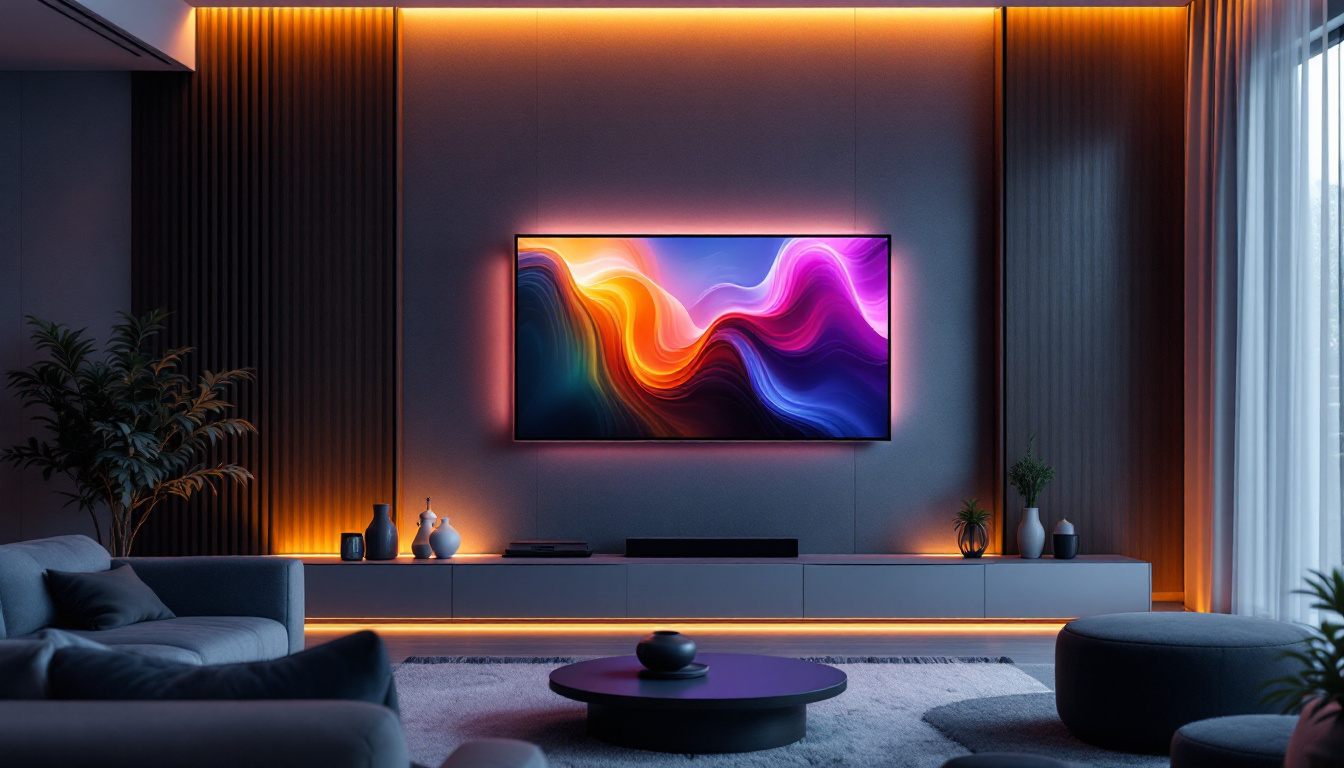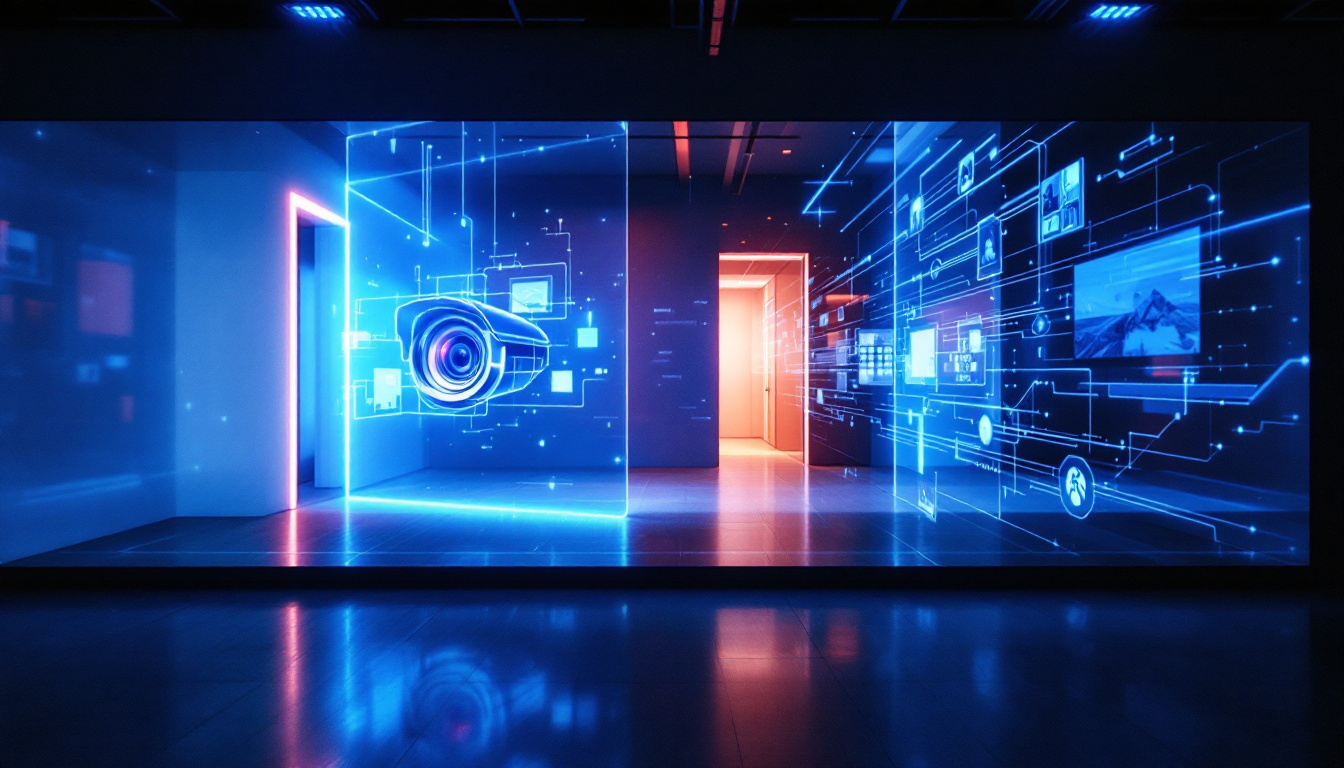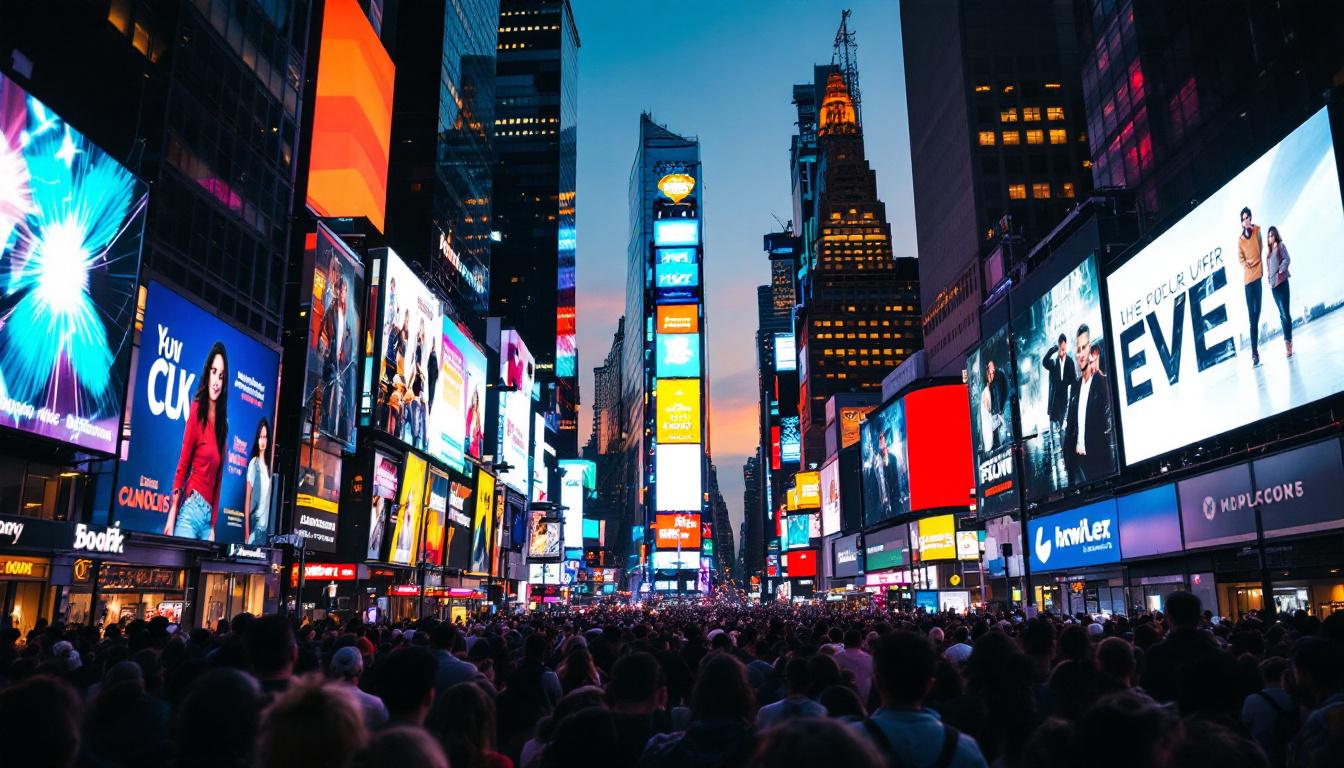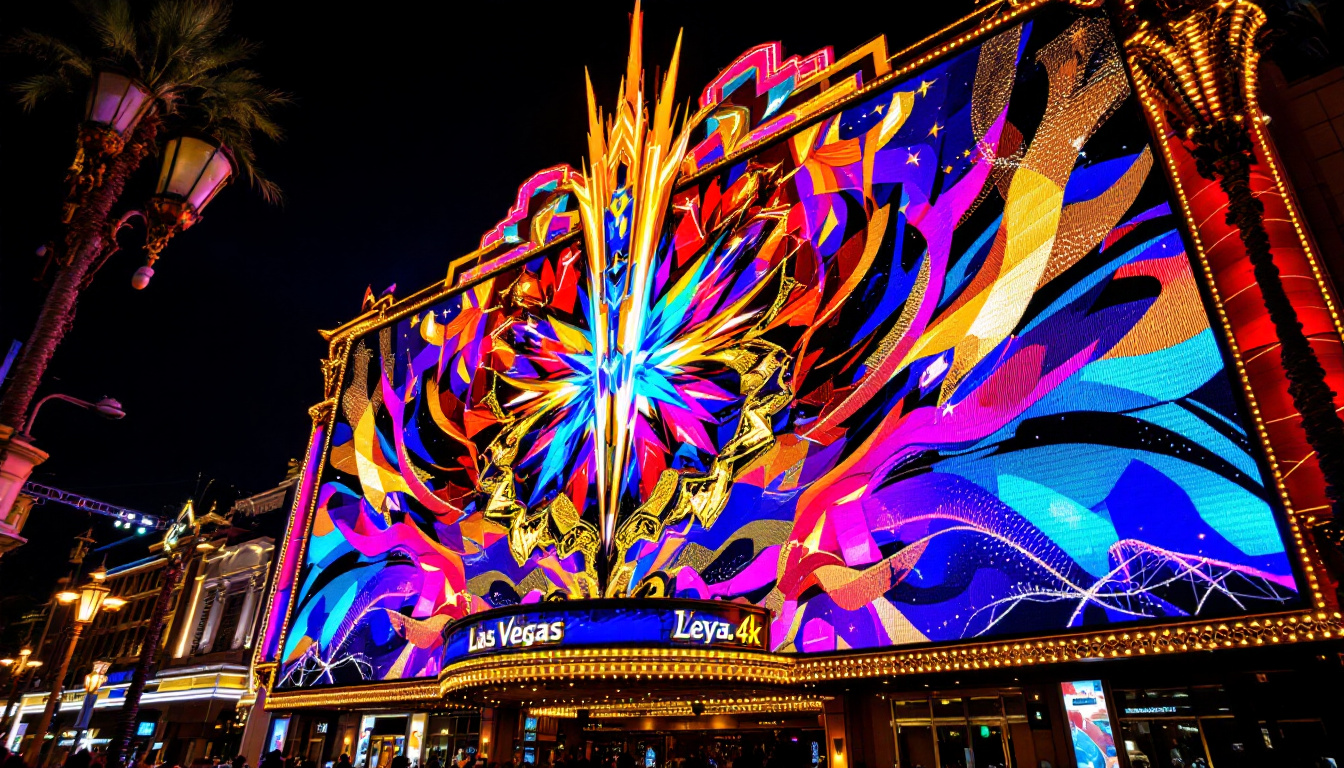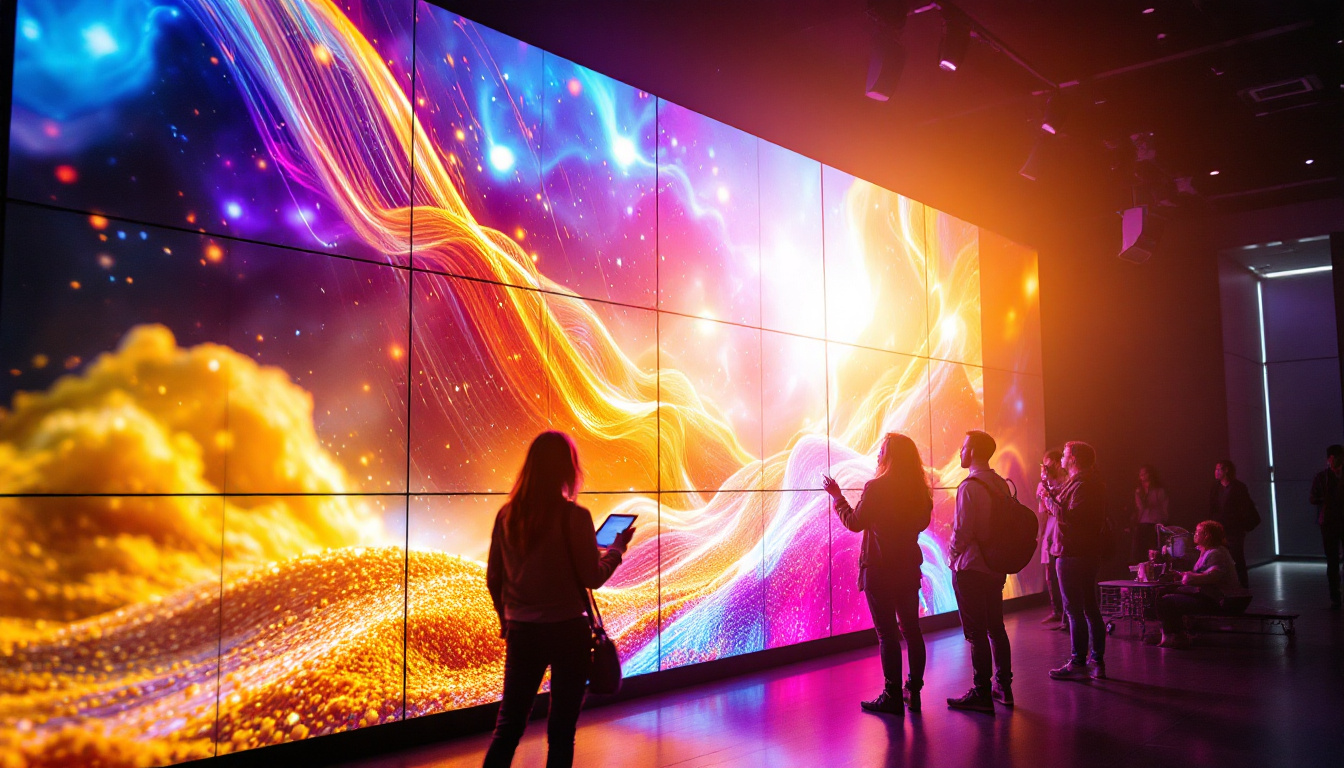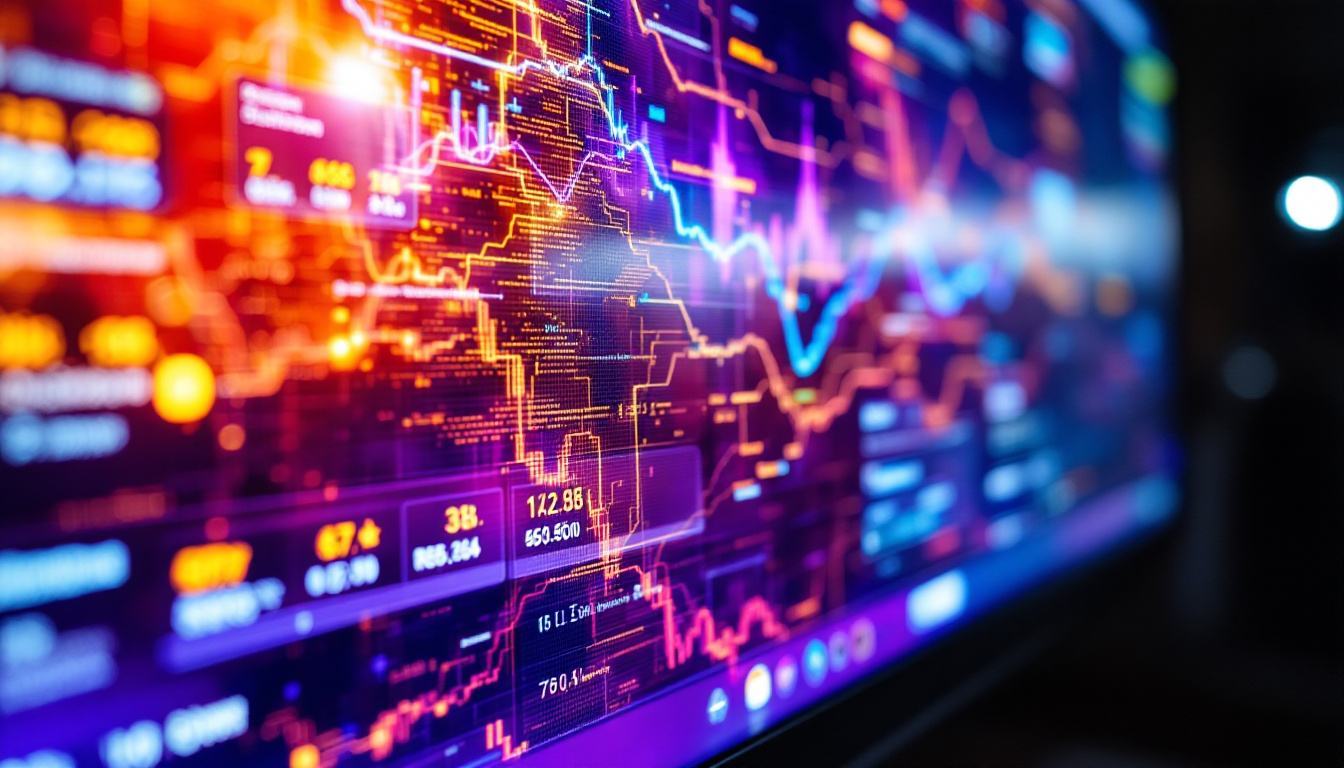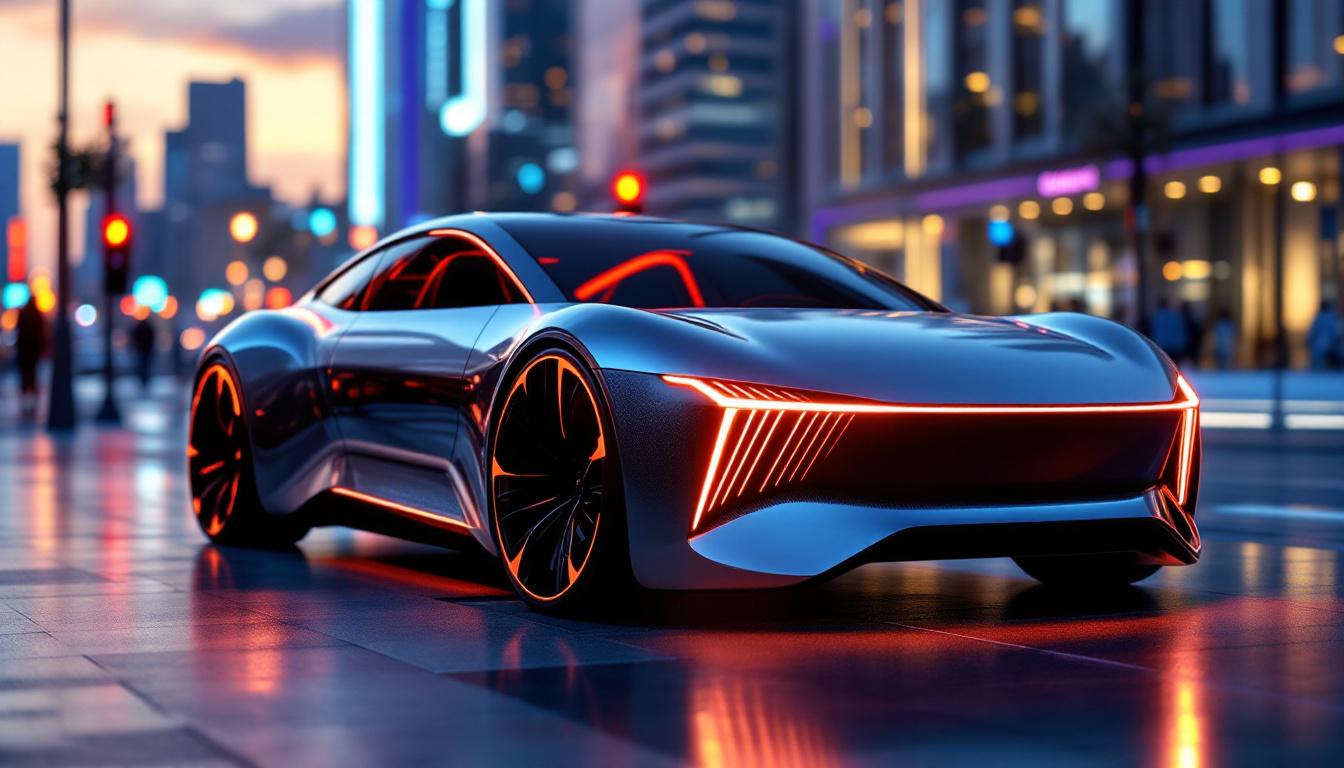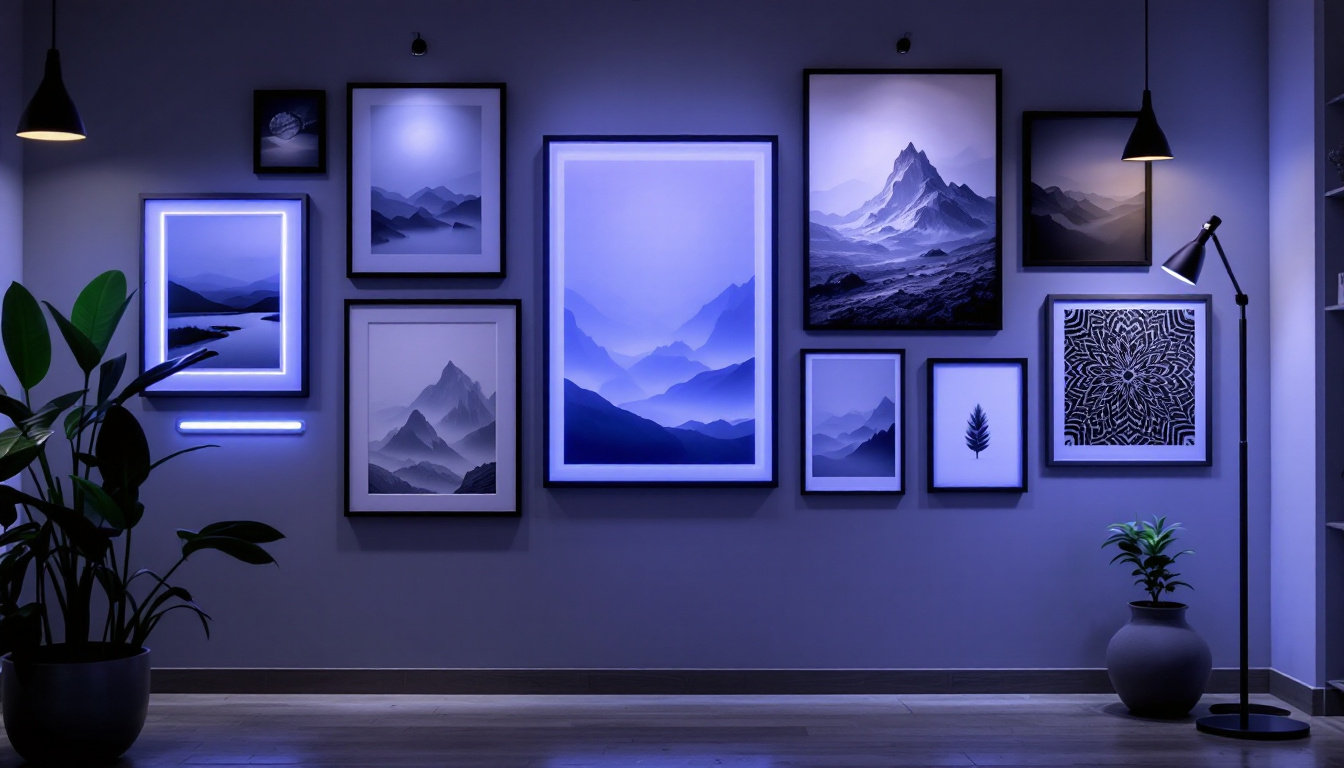In the modern world, LED displays have become ubiquitous, enhancing our daily lives through their vibrant colors and energy efficiency. From smartphones to large outdoor billboards, LED technology is everywhere. This article delves into the intricacies of LED displays, exploring how they work, their types, applications, and the future of this remarkable technology.
Understanding LED Technology
Light Emitting Diodes (LEDs) are semiconductor devices that emit light when an electric current passes through them. This simple yet powerful principle underlies the operation of LED displays, which are composed of numerous individual LEDs arranged in a grid. The fundamental characteristics of LEDs contribute to their popularity in display technology.
The Science Behind LEDs
At the core of LED technology is the phenomenon of electroluminescence. When electrons recombine with holes in a semiconductor, energy is released in the form of photons, which is perceived as light. The color of the emitted light depends on the materials used in the semiconductor. For instance, gallium nitride produces blue light, while gallium phosphide can emit green light.
This ability to produce light efficiently makes LEDs a preferred choice for displays. Compared to traditional incandescent bulbs, LEDs consume significantly less power and have a longer lifespan, making them both cost-effective and environmentally friendly.
Key Components of LED Displays
LED displays consist of several essential components that work together to produce high-quality images. These include:
- LED Modules: The building blocks of an LED display, these modules contain multiple LEDs arranged in a grid pattern.
- Control System: This system manages the display’s content, ensuring that images and videos are rendered accurately and in real-time.
- Power Supply: A reliable power source is crucial for maintaining the performance of an LED display, providing the necessary voltage and current to the LEDs.
Types of LED Displays
LED displays come in various forms, each suited for specific applications. Understanding these types can help in selecting the right display for a given purpose.
Direct View LED Displays
Direct view LED displays are made up of individual LEDs that are visible to the viewer. These displays are commonly used in outdoor advertising, sports arenas, and large venues. Their high brightness and excellent visibility in daylight make them ideal for outdoor settings.
One of the significant advantages of direct view LED displays is their ability to create large, seamless images. This is particularly beneficial for events where a massive visual impact is desired, such as concerts or sporting events. Additionally, they can be configured in various shapes and sizes, providing flexibility in design.
LED Backlit Displays
LED backlit displays utilize LEDs to illuminate an LCD screen from behind. This technology enhances the brightness and color accuracy of the display while maintaining the benefits of traditional LCDs. These displays are prevalent in televisions, computer monitors, and smartphones.
By using LED backlighting, manufacturers can create thinner and lighter screens, making them more portable and aesthetically pleasing. Furthermore, the energy efficiency of LEDs contributes to lower power consumption, which is an essential factor for many consumers.
Organic LED (OLED) Displays
Organic LEDs (OLEDs) represent a significant advancement in display technology. Unlike traditional LEDs, which use inorganic materials, OLEDs utilize organic compounds that emit light when an electric current is applied. This allows for greater flexibility in design and the ability to produce displays that are thinner and more lightweight.
One of the standout features of OLED displays is their ability to produce true blacks. Since each pixel emits its own light, when a pixel is turned off, it appears completely black, resulting in a higher contrast ratio. This quality makes OLEDs particularly appealing for high-end televisions and smartphones, where visual fidelity is paramount.
Applications of LED Displays
The versatility of LED displays allows them to be used in a wide range of applications. From advertising to healthcare, their impact is felt across various industries.
Advertising and Marketing
One of the most prominent uses of LED displays is in advertising. Digital billboards and signage can capture the attention of passersby with dynamic content that can be easily updated. This flexibility allows businesses to promote special offers, events, or new products in real-time, maximizing their marketing efforts.
Moreover, the high brightness and vivid colors of LED displays ensure that advertisements stand out, even in bright sunlight. This capability has made LED displays a preferred choice for outdoor advertising, where visibility is crucial.
Entertainment and Events
In the entertainment industry, LED displays have revolutionized the way performances are presented. Concerts, theater productions, and sporting events often utilize large LED screens to enhance the audience’s experience. These displays can show live feeds, graphics, and animations, creating a more immersive environment.
Additionally, LED technology allows for creative staging and lighting effects. By incorporating LED screens into the set design, producers can transform a simple stage into a visually stunning spectacle that captivates audiences.
Healthcare and Medical Applications
LED displays have also found their way into the healthcare sector. Medical imaging devices, such as ultrasound machines and CT scanners, often utilize LED technology for displaying images with high clarity and detail. The ability to produce accurate colors and sharp images is vital for medical professionals in diagnosing and treating patients.
Furthermore, LED displays are used in hospital signage and information boards, providing essential information to patients and visitors in a clear and engaging manner. This enhances the overall experience within healthcare facilities, making information more accessible.
Advantages of LED Displays
LED displays offer numerous advantages over traditional display technologies, making them an attractive option for various applications. Understanding these benefits can help stakeholders make informed decisions.
Energy Efficiency
One of the most significant advantages of LED displays is their energy efficiency. Compared to traditional incandescent and fluorescent displays, LEDs consume considerably less power, leading to lower electricity bills. This efficiency is particularly beneficial for businesses operating large-scale displays, such as billboards or digital signage.
Additionally, the long lifespan of LEDs—often exceeding 50,000 hours—means that maintenance costs are reduced. Fewer replacements and repairs translate to significant savings over time, making LED displays a cost-effective investment.
High Brightness and Color Quality
LED displays are known for their high brightness levels, making them suitable for various environments, including outdoor settings with direct sunlight. The ability to produce vibrant colors and deep contrasts enhances the visual experience, making images and videos more engaging.
This quality is particularly important in applications where visual impact is essential, such as advertising and entertainment. The vividness of LED displays ensures that content captures attention and leaves a lasting impression on viewers.
Versatility and Flexibility
LED displays can be tailored to meet the specific needs of different applications. They can be manufactured in various shapes and sizes, allowing for creative installations that suit unique environments. Whether it’s a large outdoor billboard or a small display for a retail store, LED technology can adapt to diverse requirements.
Moreover, advancements in LED technology, such as flexible displays and transparent screens, are pushing the boundaries of what is possible. This opens new avenues for innovative designs and applications that were previously unimaginable.
The Future of LED Displays
As technology continues to evolve, the future of LED displays looks promising. Innovations in materials, design, and functionality are set to redefine the landscape of visual displays.
Emerging Technologies
One of the most exciting developments in LED technology is the rise of microLED displays. These displays utilize microscopic LEDs to create images, offering even greater resolution and color accuracy than traditional LED displays. MicroLED technology has the potential to revolutionize everything from televisions to smartphones, providing users with an unparalleled viewing experience.
Additionally, advancements in flexible and foldable LED displays are paving the way for new applications in consumer electronics. As manufacturers continue to explore these possibilities, the integration of LED technology into everyday devices will likely become more prevalent.
Sustainability and Environmental Impact
As the world becomes increasingly aware of environmental issues, the demand for sustainable technologies is growing. LED displays are inherently more environmentally friendly than traditional display technologies due to their energy efficiency and longer lifespan. However, manufacturers are also focusing on reducing the environmental impact of production processes and materials used in LED displays.
Future innovations may include the development of biodegradable or recyclable components, further enhancing the sustainability of LED technology. This shift will not only benefit the environment but also appeal to consumers who prioritize eco-friendly products.
Integration with Smart Technologies
The integration of LED displays with smart technologies is another trend shaping the future of this industry. As the Internet of Things (IoT) continues to expand, LED displays can be connected to various devices and systems, allowing for real-time data sharing and interaction.
This capability can enhance user experiences in various applications, from smart cities with dynamic signage to personalized advertising that adapts to individual preferences. The potential for interactivity and connectivity will redefine how LED displays are utilized in the coming years.
Conclusion
LED displays have transformed the way information is presented and consumed, offering a blend of efficiency, versatility, and visual appeal. As technology continues to advance, the potential applications for LED displays are virtually limitless. From advertising to healthcare, the impact of LED technology is profound and far-reaching.
As industries embrace the benefits of LED displays, stakeholders must stay informed about emerging trends and innovations. By understanding the capabilities and advantages of LED technology, businesses and consumers alike can make informed decisions that enhance their experiences and drive progress in this dynamic field.
Discover LumenMatrix LED Display Solutions
Ready to elevate your visual experience with the latest in LED technology? Look no further than LumenMatrix, a pioneer in crafting LED display modules that bring your brand to life. Whether you’re interested in Indoor, Outdoor, Vehicle, Poster, Sports, Floor, Custom, All-in-One, or Transparent LED Displays, LumenMatrix has a solution tailored to your needs. Embrace the future of visual communication and check out LumenMatrix LED Display Solutions today to see how we can help you make a lasting impression with clarity and impact.

